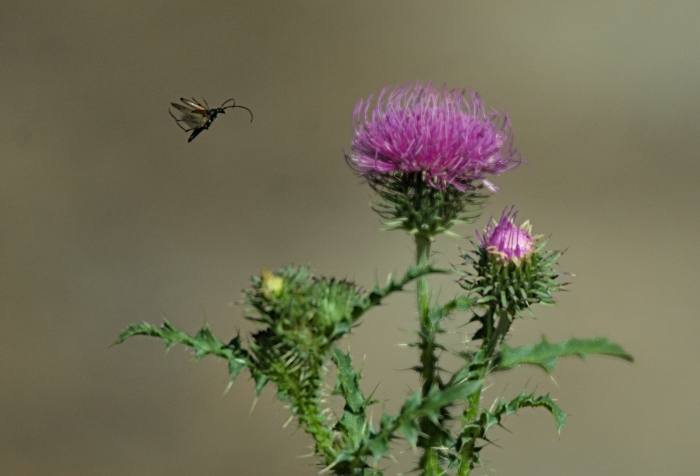Spiny Plumeless Thistle
(Carduus acanthoides)
Spiny Plumeless Thistle (Carduus acanthoides)
/
/

Pavel Komkov
CC BY 4.0
Image By:
Pavel Komkov
Recorded By:
Copyright:
CC BY 4.0
Copyright Notice:
Photo by: Pavel Komkov | License Type: CC BY 4.0 | License URL: http://creativecommons.org/licenses/by/4.0/ | Rights Holder: Pavel Komkov | Publisher: iNaturalist | Date Created: 2022-07-10T16:27:28-07:00 |









Estimated Native Range
Summary
Carduus acanthoides, commonly known as the spiny plumeless thistle, is a biennial herb native to Europe and Asia, specifically thriving in disturbed areas, pastures, and fields. It has been introduced to North America and other regions, where it is often considered invasive. This plant can reach over 7 feet tall, with spiny, woolly foliage and a robust, spiky appearance. It produces small, purple to pink flowers from June to August, which are not particularly showy but are attractive to pollinators such as bees and butterflies.
The spiny plumeless thistle is known for its rapid growth and ability to colonize disturbed soil, making it a concern in agricultural lands where it can outcompete crops and native vegetation. In cultivation, it is generally avoided due to its invasive nature and potential to spread aggressively. However, it can be used in wildflower mixes for restoration projects if carefully managed. It prefers full sun and can tolerate a range of soil types, from sandy to loamy, as long as they are well-drained. Due to its spiny leaves and stems, it is generally not browsed by wildlife or livestock.CC BY-SA 4.0
The spiny plumeless thistle is known for its rapid growth and ability to colonize disturbed soil, making it a concern in agricultural lands where it can outcompete crops and native vegetation. In cultivation, it is generally avoided due to its invasive nature and potential to spread aggressively. However, it can be used in wildflower mixes for restoration projects if carefully managed. It prefers full sun and can tolerate a range of soil types, from sandy to loamy, as long as they are well-drained. Due to its spiny leaves and stems, it is generally not browsed by wildlife or livestock.CC BY-SA 4.0
Plant Description
- Plant Type: Herb
- Height: 1.5-5 feet
- Width: 1.5-2 feet
- Growth Rate: Rapid
- Flower Color: Pink, Purple
- Flowering Season: Summer
- Leaf Retention: Deciduous
Growth Requirements
- Sun: Full Sun
- Water: Medium
- Drainage: Medium, Fast
Common Uses
Erosion Control
Natural Habitat
Native to disturbed areas, pastures, and fields in Europe and Asia
Other Names
Common Names: Spiny Plumeless Thistle, Welted Thistle
Scientific Names: , Carduus acanthoides, Carduus acanthifolius, Carduus acanthoides f. acanthoides, Carduus crispus, Carduus crispus var. litiginosus, Carduus martrinii, Carduus polyacanthos, Carduus polyacanthus, Carduus velebiticus
GBIF Accepted Name: